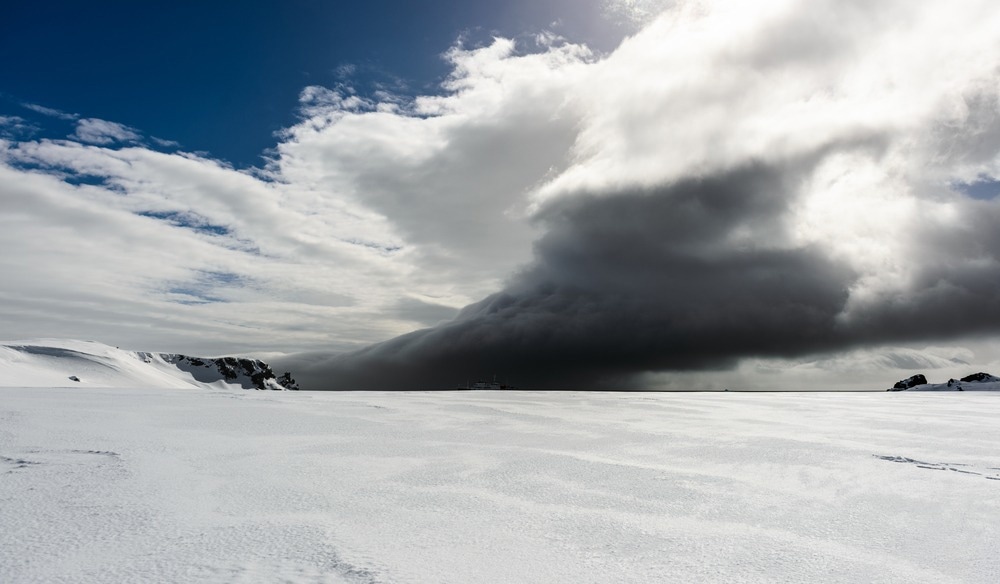In a warming climate, the sustainable development of cryospheric meltwater on the Tibetan Plateau has sparked worries because of its significance for the fragile ecosystem in the headwater regions and the dense populations downstream.

Image Credit: Anton_Ivanov/Shutterstock.com
Existing studies have primarily focused on glacier melt and snow melt on the Tibetan Plateau, which can be discovered from the surface using in-situ or satellite observations. The hydrological implications of thawing permafrost beneath the ground surface, on the other hand, are largely unknown.
The research was headed by Dr. Taihua Wang and Dr. Dawen Yang (Tsinghua University), along with experts in the field of both permafrost and glacier, including Dr. Tandong Yao, Dr. Xin Li (Institute of Tibetan Plateau Research, Chinese Academy of Sciences), Dr. Guodong Cheng and Dr. Huijun Jin (Northwest Institute of Eco-Environment and Resources, Chinese Academy of Sciences).
For the study of permafrost hydrology changes, the ground surface observations have to be combined with physically-based models to examine what is happening below the ground surface.
Dr. Taihua Wang, Tsinghua University
As a result, an urgently needed hydrological model that can mirror the complex interactions between cryospheric and hydrological processes is required.
For years, the research group headed by Dr. Dawen Yang has worked to develop such a model. Dr. Dawen Yang created a distributed hydrological model called the “Geomorphology-Based Hydrological Model (GBHM)” two decades ago.
Dr. Dawen Yang took part in a significant research plan supported by the National Natural Science Foundation of China in 2010 titled “Integrated research on the eco-hydrological process of the Heihe River Basin,” headed by Dr. Guodong Cheng.
The distributed Geomorphology-Based Ecohydrological Model (GBEHM) was created with the support of the research plan and collaboration with experts from various disciplines and has been applied successfully in many headwater regions of the Tibetan Plateau.
Another obstacle to relevant research is the scarcity of data on the Tibetan Plateau. The simulation can now be applied to the entire Tibetan Plateau with an unprecedented high spatial resolution (1 km × 1 km) thanks to recent accumulations of both in-situ and satellite observations, but also augmented geoscience data sharing platforms like the National Tibetan Plateau Data Center headed by Dr. Xin Li.
The modeling study’s findings offer some new insight into the magnitude and timing of water supply changes caused by thawing permafrost and melting ground ice. The average ground ice storage across the Tibetan Plateau is approximated to be about half the size of glacier ice storage by incorporating in-situ borehole observations with the spatial distribution of depositional types and paleo-precipitation information.
However, the decline in ground ice storage was nearly twice the amount of glacier mass loss between 1980 and 2019, implying a more significant decline in the subsurface ice reserve than the above-surface one at the plateau scale, despite the fact that the former has received far less attention.
The research quantifies the contribution of ground ice meltwater to river runoff by tracing meltwater flow paths. Despite its small contribution at the plateau scale (~0.5%), ground ice meltwater runoff can be locally significant and greater than that from glacier melt in many sub-regions, including the upper Yellow, upper Yangtze, and Qiangtang Plateaus.
However, meltwater runoff from thawing permafrost is unsustainable in the coming decades, potentially jeopardizing water security in areas that rely on thawing permafrost for water supply.
This is similar to previous findings of unsustainable meltwater supply from glaciers on the Tibetan Plateau. The impacts could be more evident in arid regions and dry years, and we have to get prepared for this additional risk caused by unsustainable cryospheric meltwater supply.
Dr. Taihua Wang, Tsinghua University
Notwithstanding the study’s uncertainties, the results demonstrated the rarely studied yet significant role of permafrost thaw and ground ice meltwater in the Asian water tower.
To reduce the uncertainty in the estimates, high-resolution remote sensing observations and more available to the public in-situ observations across the Tibetan Plateau can be used in the future. Future research can look into the influence of unsustainable cryospheric meltwater on the fragile alpine ecosystem and regional carbon budget on the Tibetan Plateau.
Journal Reference
Wang, T., et al. (2023). Unsustainable water supply from thawing permafrost on the Tibetan Plateau in a changing climate. Science Bulletin. doi.org/10.1016/j.scib.2023.04.037.